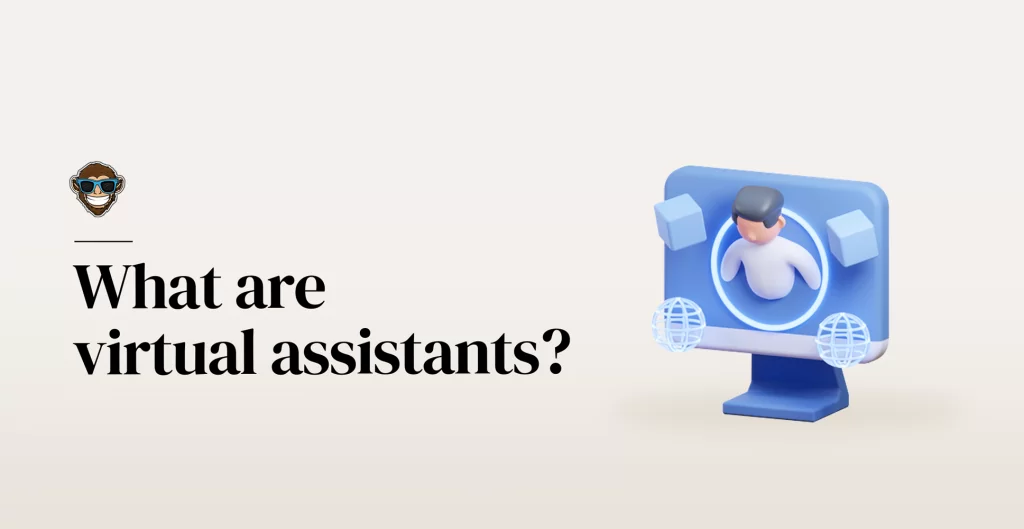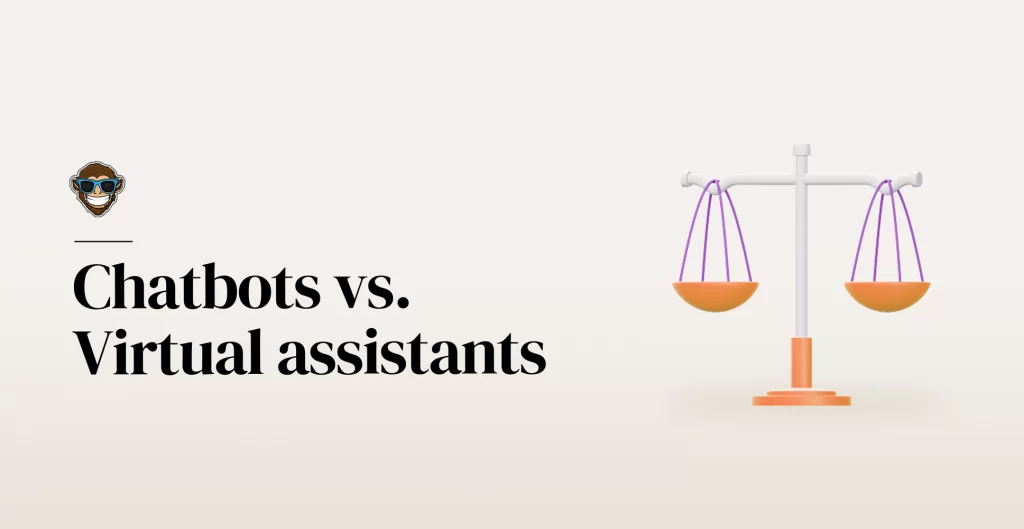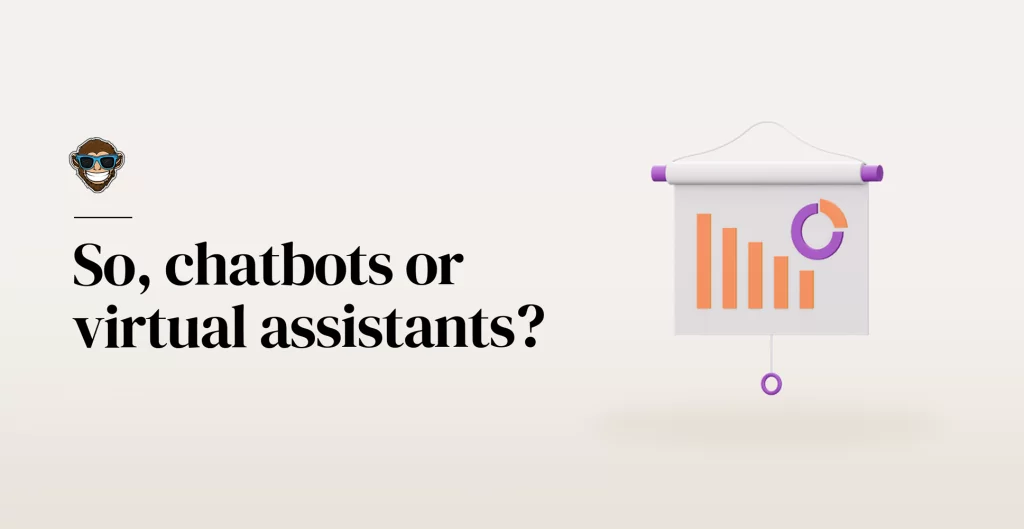Customer service operations are being streamlined by chatbots and virtual assistants, which, more than a luxury, are becoming essential tools for organizations of all industries and countries worldwide who want to deliver stellar service to their clients.
In today’s digital market, and with the growing adoption of modern technology trends, terms like Artificial Intelligence (AI), Machine Learning (ML), and Robotic Process Automation (RPA), among others, are starting to roll out of tongues with increasing ease every day. Our smartphones, tablets, computers, speakers, and even appliances are now powered by these technologies and their offspring, which now have names and even personalities that we can interact with and help us with our everyday tasks. Even companies of all shapes and sizes and worldwide conglomerates have started to leverage these invaluable tools to implement different conversational interfaces. As a result, they have reinvented themselves and helped power their operational efficiency, potentialize customer service, and automate most of their business processes. In that sense, these modern technologies are becoming the new worldwide bid for contemporary communication channels, and their adoption, more than a luxury, is becoming the norm. For this reason, modern AI applications such as chatbots and their more refined counterparts, virtual assistants, have become the talk of the town.
Now, we can use AI, ML, and even RPA-powered chatbots and virtual assistants more effortlessly and seamlessly than ever before. Modern-day chatbots and virtual assistants can now carry out complete conversations with humans. They can conduct real-time data analysis to deal with customer service queries, perform tasks, solve problems, schedule appointments, gather and process data, answer questions, and much more. But, what exactly are chatbots and virtual assistants? What’s the difference between the two? Are both necessary for modern app development? How are they developed?
In this article, we’ll try to answer these, and more, questions regarding chatbots and virtual assistants to help you understand them better and, in case you’re thinking about developing one, guide you on your journey. If not, we’ll hopefully manage to help you understand a bit more about chatbots and virtual assistants, their differences, and their importance for app development.

What are chatbots?
A chatbot is an AI-powered computer program that can simulate and process any written and spoken human conversation using natural language via any digital platform or smart device. Chatbots simulate real-life conversations with humans allowing us to interact with our usual digital devices to achieve a goal such as solving a problem or making an appointment quickly and without waiting for an actual human being to become available. They have become so popular that the value of chatbot e-commerce transactions is projected to grow to $112 billion by the end of 2022. Simultaneously, they could reduce the cost of each customer interaction by $0.70, meaning they could help save worldwide industries millions!
Chatbots perform their jobs so smoothly thanks to two AI-powered technologies: Natural Language Processing (NLP) and machine learning. Both these technologies are fundamental for chatbot development because they are responsible for giving computer programs and software the ability to understand written and spoken words to interact with humans. On the one hand, NLP uses computational linguistics, algorithms, and statistical models to train computers to process and learn text and voice data to respond to linguistic commands. On the other hand, ML gives chatbots a sort of autonomy and, using complex algorithms, trains them to understand data and identify patterns to respond and make decisions with minimal human intervention. As a result of both these technologies merging, we get computer programs that, when asked a question or given an answer, can process it, understand it, and respond. And, sometimes, the response is so sophisticated that it can become challenging to discern if it’s a human or a chatbot you’re talking to.
Sounds complicated–and expensive– but the truth is that chatbots are very malleable, and you can adapt their development to meet your needs. In fact, chatbots are so versatile that their development can range anywhere from basic, rudimentary programs that answer simple queries to sophisticated assistants that learn and have a conversational evolution that delivers personalized responses as they gather more information. So, depending on your app and your business needs, you can easily define your chatbot’s level of intelligence and complexity by determining how you apply the AI-powered technologies mentioned above. In that sense, you should also know that there are different types of chatbots for you to choose from:
Rule-based chatbots: These types of chatbots are fundamental and straightforward: a user asks a question, and the chatbot responds with a short answer. They work using predefined conversational flows where users navigate through buttons and menus, answering simple, to-the-point questions.
AI-based chatbots: As mentioned earlier, AI is fundamental for more complex chatbots. NLP and machine learning-based chatbots can easily hold complex conversations, learn from the conversational flow, and issue responses without human supervision.
Hybrid chatbots: If none of the above suits your needs, you can simply opt to mix some of the sophistication of AI with the simplicity of ruled-based chatbots to get the best of both worlds.
Whichever chatbot model you choose, it’s crucial to keep your company’s needs and limitations in mind to avoid incurring costs and processes you may not be ready to handle. So, always conduct your research first to make sure you choose the best option for you.

How to develop your own chatbot?
Do your research: As with all products you might build, research is the crucial first step. You need to know your target audience, what they want, their pain points, and the problems they’re trying to solve by using a chatbot. Doing so will help you understand the type of chatbot you need to build, why you need to build it, who you’re building it for, and which features you need to implement. Once you’ve answered these questions, you can easily identify your new chatbot’s implementations, costs, and requirements.
Determine your channels: Now that you’ve done your research, you should know your primary communication channel. For example, do your users contact you on social media or Whatsapp? On a chat widget on your website? On your mobile app? Once you know your preferred platform, determine if you need an API or any additional tools that you don’t already have in your stack. Additionally, you can quickly implement a multi-channel approach and use the same chatbot stack across several platforms if you choose to do so.
Choose your frameworks and tech stack: After establishing your chatbot’s requirements and channels, you’re ready to choose your tech stack and chatbot frameworks. Here, you need to decide whether you’ll use one of the “chatbot builders” on the market or choose your own frameworks to code and develop your chatbot. Once again, this depends on your company’s needs and your team’s skills, knowledge reach, and limitations. In any case, you can choose chatbot builders such as Chatfuel, Tidio, or Pandorabots, which work for both developers and non-developers that want–or need–to simplify their chatbot’s development process. Or, you can opt for frameworks such as Microsoft’s Bot Framework, Amazon Lex, or IBM Watson, which provide libraries and allow you to code in any language you choose.
Design your conversational flow and train your chatbot: This step depends on your chosen approach in step 3. If you decide to go with a chatbot builder, your conversational flow and training are as simple as a drag-and-drop operation. However, if you opt for a DIY chatbot, the process is more complicated. You should have expert developers who know everything about AI and have the skills to train your bot on massive data sets and build content models for conversational flows. They also need to know how to make sure your bot’s conversational skills are scalable, add NLP triggers, and establish robust and user-friendly conversational UI. It sounds like a lot, but if you’ve done your research and made sure your team is qualified, you’ll have your very own chatbot in no time.
Testing: Finally, it’s time to make sure everything works as it should. Test your chatbot inside your chatbot builder account or, if it’s a DIY chatbot, use testing tools such as Botium or Zypnos to help you pinpoint glitches and make improvements so that your chatbot works seamlessly and smoothly always. Once you deploy your chatbot, closely monitor its interactions and ensure it fully integrates with your selected channel, software, or mobile app.
So, now you know the most critical aspects of chatbots and their development for mobile apps. But what about virtual assistants? Are they the same as chatbots? Let’s find out.

What are virtual assistants?
Virtual assistants, or voice assistants, are AI-powered, software-based programs designed to emulate a real-life personal assistant. They can help us manage most of our day-to-day activities such as setting alarms, organizing schedules, making calls, setting reminders, making appointments, sending messages, and much more. Due to their primary purpose being centered on the user’s specific needs, virtual assistants are always designed with a strong focus on the end-user. They are trained and programmed to receive, understand, process, and carry out tasks assignments via voice commands. Thanks to their AI-powered core, virtual assistants can make sense of human speech and spoken commands which they can interpret thanks to AI neural networks and NLP. These networks allow them to understand and learn from conversational flows. As time goes on and they gather more data, they can become wiser to the point of even predicting most of the user’s preferences and behaviors.
The most popular virtual assistants currently leading the market are Amazon’s Alexa, Apple’s Siri, Google’s Assistant Hey Google, and Microsoft’s Cortana. These virtual assistants have become so popular that almost 75% of people in the US claim to have used voice assistants in the last month, and 72% say they use their voice assistant devices, such as Amazon’s Alexa-powered Echo, daily. This popularity is driven by virtual assistants’ extraordinary capabilities to understand human language, respond to it, and communicate with their users and even with other intelligent devices.
Virtual assistants work thanks to two AI-powered technologies: NLP and its subset, Natural Language Understanding (NLU). First, they usually respond to vocal cues or “wake words” such as “Hey Siri” to “wake them up” and signal them to start paying attention. Afterward, when virtual assistants are ready and receive a voice command, they organize it into structured data to figure out what it means, using NLP-powered pattern-matching algorithms. These algorithms, paired with NLU, help voice assistants handle a more seamless human-like interaction and give them the capacity not only to understand voice commands but recognize the speaker’s intention, sentiment, and mood. As a result, virtual assistants can act like “real” people that understand and respond to a conversation without human supervision. They can also recognize language-borne feelings, identify grammar and patterns, and be trained to identify semantic knowledge to infer intent, empathize, and even recognize slang!
Virtual assistants are gaining increasing popularity, and with an ever-growing number of users taking advantage of them, they will likely become a necessity for most mobile apps and devices in the future. As a result, you may want to start planning if and how you will introduce voice assistants into your app. And, even though the most popular ones belong to internet giants, you can either develop your own voice assistant for your mobile app or use APIs, SDKs, and various AI tools to integrate any of the existing ones, like Alexa or Cortana, into your product. The latter option is better if you have budgetary or time constraints and is also easier and more efficient to use what’s available and already popular simply. For instance, as of 2016, most third-party apps can integrate Siri using Apple’s SiriSDK, which provides extensions for seamless integration. In any case, your research will determine which approach is better for your and your company’s needs.

Chatbots vs. Virtual assistants
So, chatbots and virtual assistants are the same? While they have some similarities, they are two starkly different computer programs with significantly different functions and features. Here are the main differences between them:
1. Intelligence
To put it simply, chatbots are far less intelligent than voice assistants. Chatbots are usually text-based and can only answer the questions or statements they’ve been trained for. Any query outside their realm of understanding will make them lose context and fail to respond. For this reason, chatbots can’t maintain lengthy and complex long-term conversations and often fail to process different languages, intent, and sentiment.
Virtual assistants are far more advanced thanks to their NLP and NLU-driven nature. They can recognize the rationale behind the speaker’s emotions and intent and successfully decipher different languages and the semantics behind them. They can also maintain lengthy, human-like conversations without losing context, learn from their mistakes, simulate and learn from human emotions. They can also be programmed to perform more complex tasks like making reservations and analyzing navigational routes.
2. Technology
The technology behind rule-based chatbots is based on simple pre-designed scripts and norms that limit their capacity to respond and maintain a conversation. On the other hand, AI-driven chatbots are powered by NLP, which allows them to maintain human-like conversations and can be programmed to identify certain linguistic patterns to help them answer specific queries. However, they have a structured nature, meaning they don’t have broad language processing capabilities and can’t function out of the purview of their programmed capabilities, only being able to carry out limited and short conversational flows.
Virtual assistants are also AI-driven and also function mainly thanks to NLP. However, they also have NLU as a propeller of better linguistic and analytic capabilities that allow them to understand sentiments, intention, mood, slang, context, ambiguities, and most terms used in colloquial conversations. They can also maintain long conversations without losing context, and, thanks to NLU, they can also learn and improve their algorithmic drivers as they accumulate more knowledge. As a result, virtual assistants are significantly more conversational, practical, and technologically advanced than chatbots.
3. Use cases
Due to their technologically limited capabilities, chatbots have a limited usage scope. They are instrumental in scenarios with simple interactions where their basic pre-designed answers are sufficient to fulfill their purpose. Chatbot use cases focus on scheduling appointments, answering queries, placing orders, or gathering user feedback, to name a few, which is why they are very popular in healthcare, marketplace, and FinTech apps. However, they can’t perform in complex scenarios where they need to learn or respond to feelings or have long conversations. As a result, chatbots are helpful to respond to queries and perform on websites, social media messaging like Facebook Messenger, mobile apps like Whatsapp, in-app widgets, and most customer-service portals.
Virtual assistants, on their part, have a broader usage scope. They can carry out complex conversations and perform complicated tasks thanks to their technologically advanced nature. Virtual assistants can perform optimally under more linguistically challenging and intricate situations such as playing music, turning on appliances, making jokes, establishing navigational routes, and making suggestions. Moreover, they can interact with users on their own and learn as they go to make their interactions better over time. As a result, we can find virtual assistants implemented into devices such as Amazon’s Echo, where they work by voice commands. We can also find them on most mobile devices such as smartphones and tablets. In addition, you can integrate some of them with third-party applications allowing users to interact with them in a broader range of scenarios.
4. Interface
Chatbots perform via a Conversational User Interface (CUI), which acts like a chat-like channel that allows users to communicate with the bot. CUIs provide graphical and language elements that promote the interaction between humans and computers while giving bots a functional framework for generating appropriate responses. CIUs work on any device and usually take the form of a messenger within an app or a website.
Some virtual assistants can also feature chat-like interfaces such as CUIs and perform optimally. However, because of their complexity and voice-activated use cases, the modern ones usually work without an interface. Instead, virtual assistants are powered by Artificial Neural Networks (ANNs), a computer system modeled after the human brain that stimulates neural connections and has interconnected nodes that work just like neurons would. This way, virtual assistants can “think” in a human-like manner, meaning they can make decisions and provide responses just like a human would. Moreover, ANNs are also critical for learning and improving as virtual assistants gather more information, making them more competent and able to hold conversations.

So, chatbots or virtual assistants?
As you can see, both chatbots and virtual assistants hold different capabilities that can help your mobile product gain a significant competitive edge. Both can be useful for your business, and both can provide critical functions and perks such as a boost in revenue, popularity, retention rates, and better user experience, to name a few. However, which one you choose to implement depends entirely on your ability to identify the correct application areas for each one and how you can best leverage both of these AI tools. In that sense, the best way to choose is to conduct thorough research to determine your users’ needs and your business goals to figure out which solution accommodates those needs and goals and avoid extra costs that can hurt your company later.
As we already discussed, chatbots are highly usable and adaptable due to their ease of implementation, simplicity, adaptability, and low costs. In addition, they are robust enough to help you improve your mobile app’s customer engagement rates and promote operational efficiency without complex implementations or overhead costs. As a result, chatbots are excellent for simple customer service tasks that they can carry out via messaging or social platforms like Facebook and Whatsapp. So, if this is your case, we suggest you go with chatbots.
On the other hand, virtual assistants are more complex and require more human resources, skills, knowledge, and investment to implement. Therefore, they are beneficial for more complex business and mobile apps where users need help with their day-to-day tasks and require immediate assistance to help with their chores. However, due to their NLP-powered nature and all the complexity that comes with it, their implementation is not straightforward. Therefore, it can take longer and affect your budget significantly. Furthermore, keep in mind that, while they do help your users on their daily tasks, they may not perform well in customer service scenarios, so you may need to implement a separate customer service channel. Lastly, suppose you definitely want to implement a virtual assistant into your mobile app but don’t want to spend the extra money and time developing your own. In that case, you can integrate one of the existing ones with the help of an API and secure SDKs.

Final word
The world of AI is growing every day, and more innovative solutions are hitting the market, giving us developers better and more robust tools to work with. Both chatbots and virtual assistants are evolving every day and are becoming more essential and capable tools to help humans interact with computers at a more personal level. Both have their pros and cons and, if you choose right, any one of them can provide stellar benefits to your mobile product. Chatbots may seem like the weaker option, but they work exceptionally well in simple customer service contexts and are more suitable for smaller projects. On the other hand, virtual assistants seem to be getting more intelligent as we speak and appear to be the future of the human-computer relationship. Additionally, they will surely get easier to implement and more developer-friendly as time goes on and the technology behind them becomes more widespread.
Now that you can see the big picture regarding chatbots and virtual assistants, we hope you can make a more informed decision about which one is more suitable for your mobile app. However, if you still have questions or concerns, please don’t hesitate to contact us!
